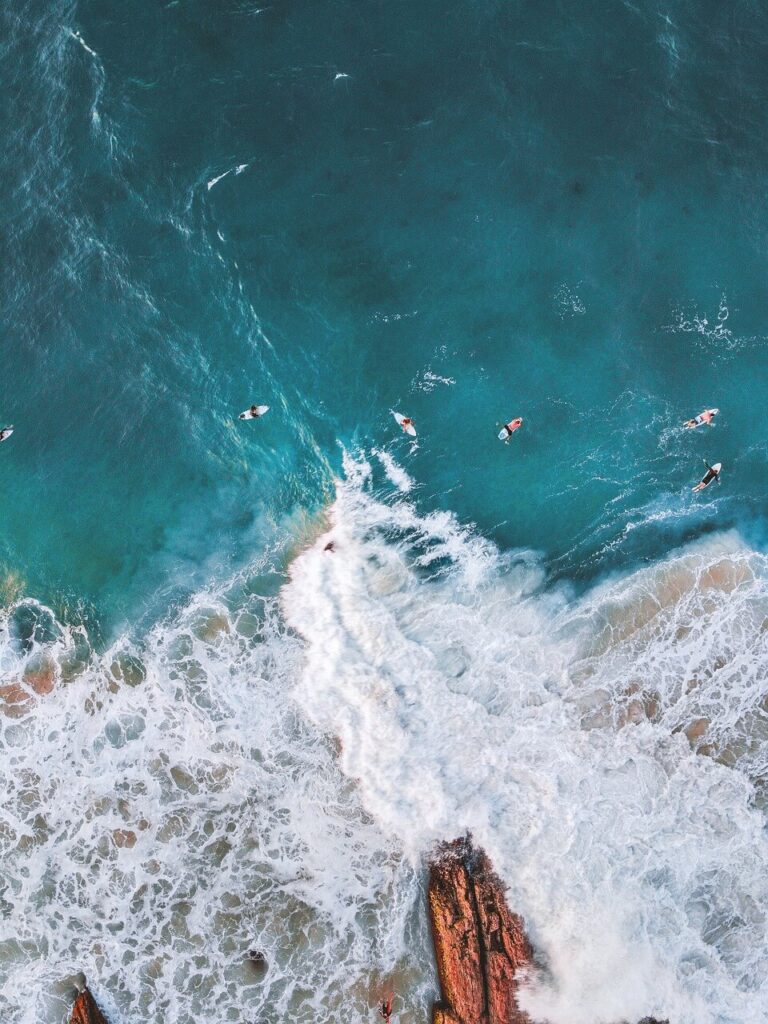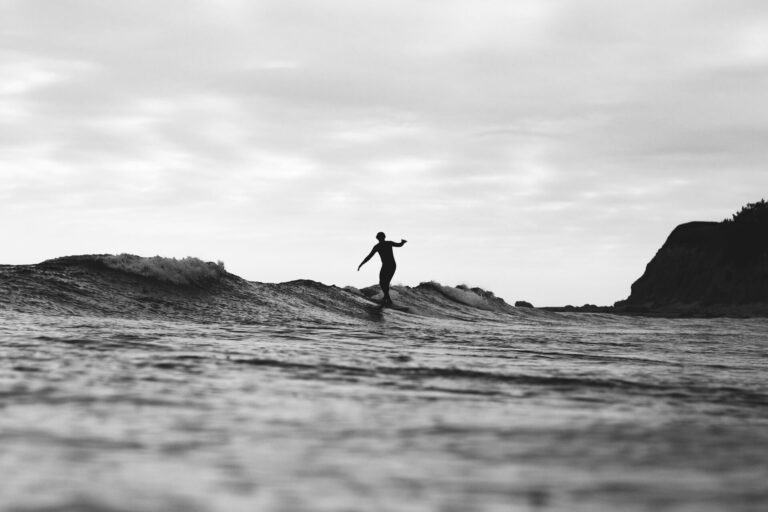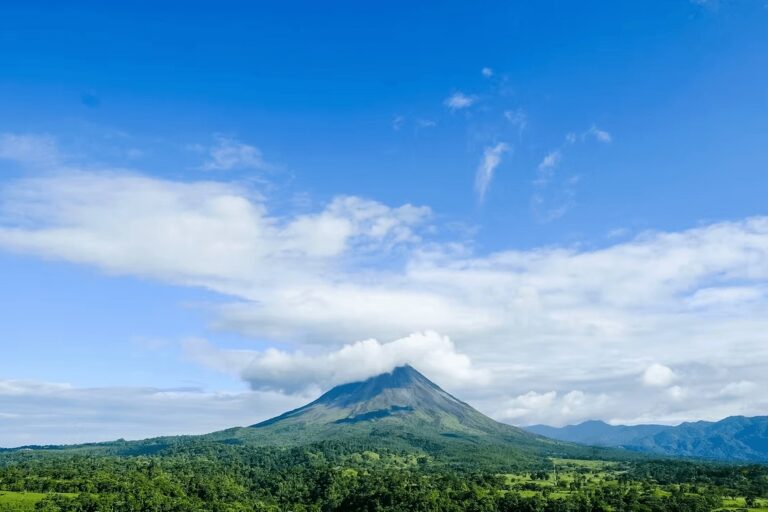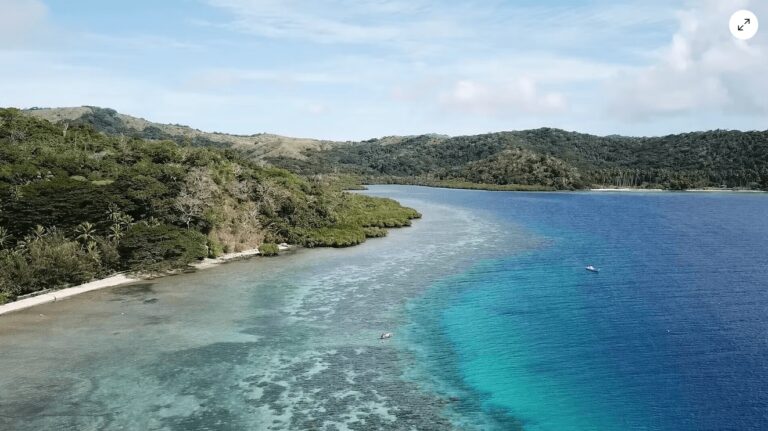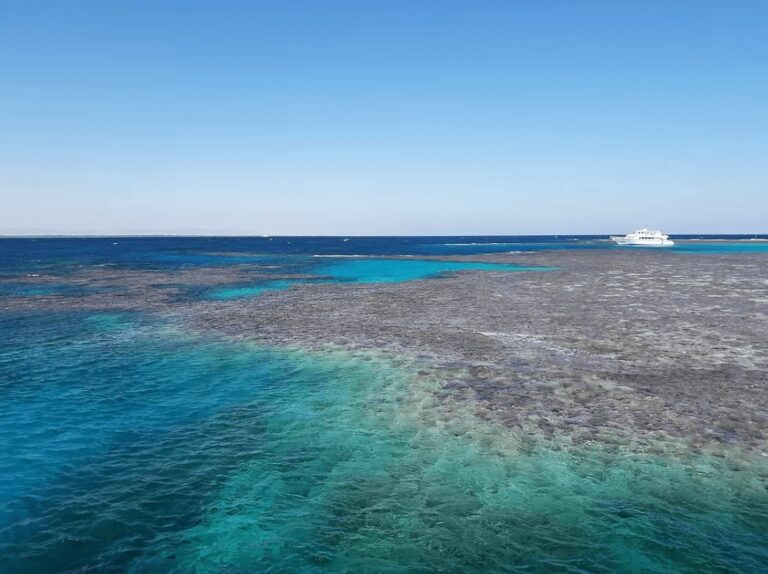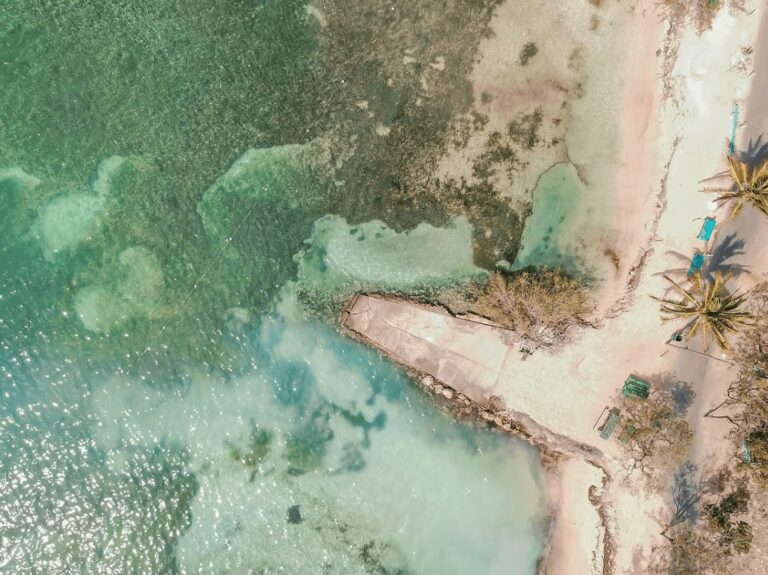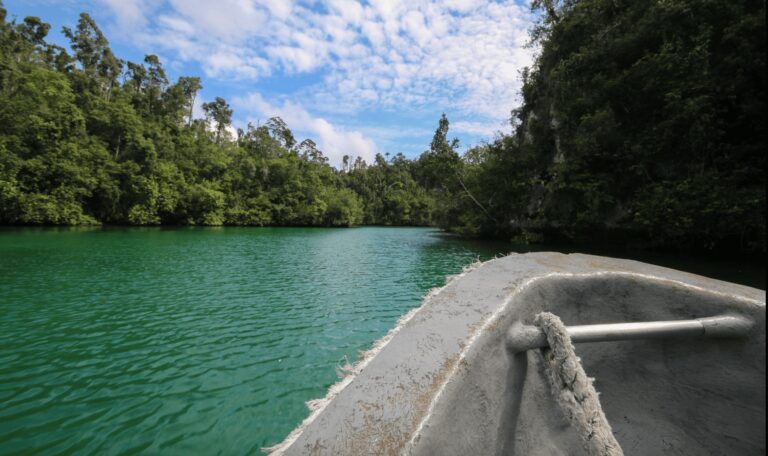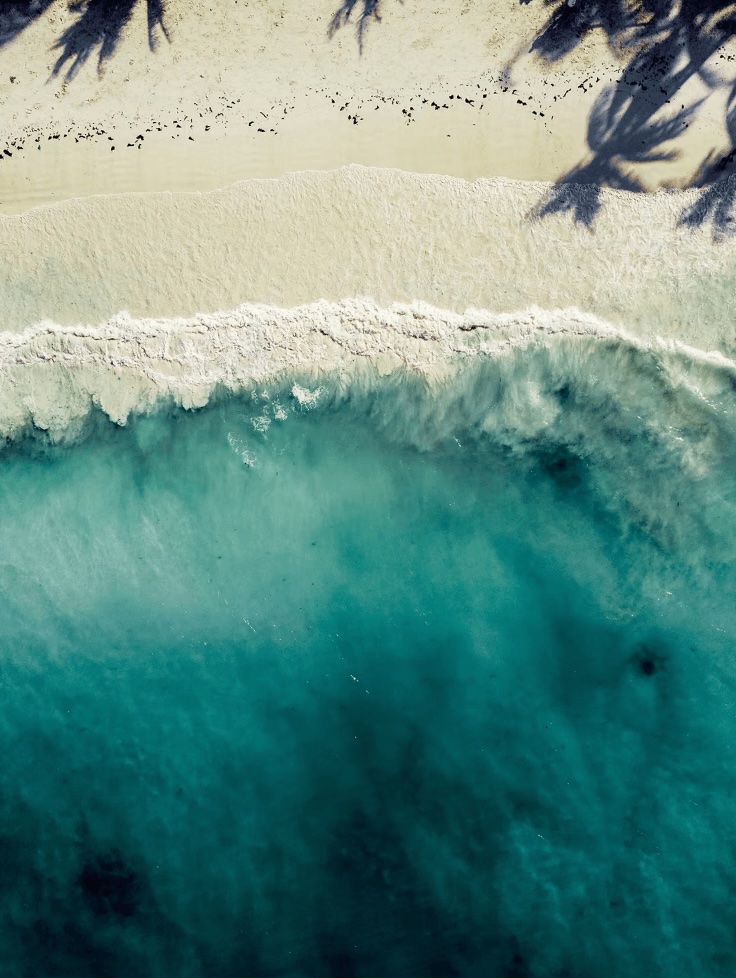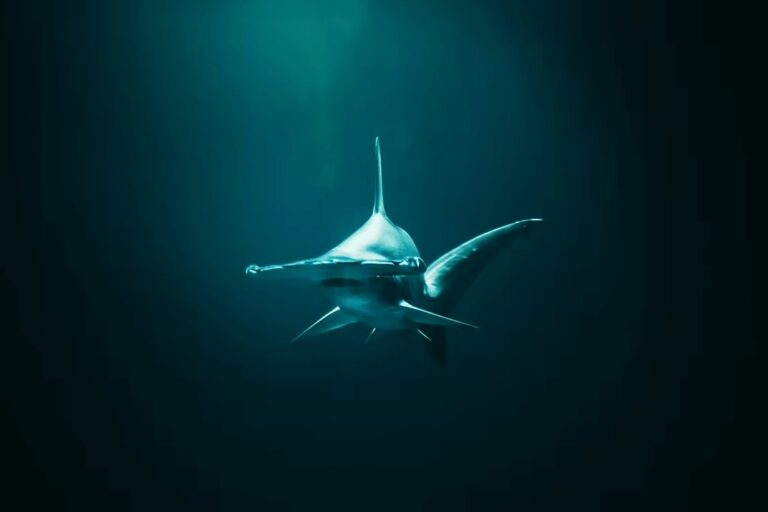Scuba diving in Malaysia: Best dive sites + eco-friendly dive resorts
Planning a dive vacation in Malaysia? Discover everything you need to know about scuba diving in Malaysia, including the best dive sites and eco-friendly resorts for a sustainable stay.
From the beginner-friendly sites along the east coast of Peninsular Malaysia to world-renowned Sipadan in Borneo, Malaysia caters to divers of all skill levels.
It offers an incredible diversity of underwater environments to explore, making it a bucket list destination for scuba divers in Southeast Asia.
Aside from its calm and protected reefs, the east coast of Peninsular Malaysia offers plenty to pique the interest of advanced divers. There are shipwrecks, pinnacles and healthy coral gardens that support an abundance of life.
On the west coast, you’ll find the ever-popular resort island of Langkawi, which is a great option for novice divers just starting out.
Surrounded by deep, nutrient-rich waters, the island of Sipadan is a standout for experienced divers and renowned for its thrilling pelagic encounters.
No matter what your experience level, Malaysia’s coastlines provide an underwater playground with a winning combination of accessible dive sites and paradisiacal island resorts.
In this article, we’ll highlight 7 of the best places to dive in Malaysia to help you find a destination that’s right for you. For each destination, we’ll detail what you can expect to see and eco-friendly resorts for a sustainable stay.
Planning a dive trip to Southeast Asia? Check out our scuba guides to Indonesia, Thailand, Myanmar, Timor-Leste and the Philippines.

This article contains affiliate links, which means when you make a purchase through that link, we earn a small commission. Affiliate links come at no cost to you and ensure our content remains free!
Perhentian Islands
Comprising two islands, the Perhentians are a tropical paradise, boasting some of the most gorgeous beaches that Malaysia has to offer.
Situated off the northeast coast of Peninsular Malaysia, this idyllic archipelago is a popular destination for both beach-goers and underwater enthusiasts alike. It has everything from high-end resorts to charming beachside bungalows.
The Perhentians lie within Terengganu Marine Park, which protects a diverse array of marine life. This includes sea turtles, reef sharks and tropical fish.
Scattered around the islands are over 20 dive sites (easily accessible by speedboat) that offer calm and relaxed diving conditions suitable for all skill levels.
For wreck diving enthusiasts, the “Sugar Wreck” is a must-see, with this cargo shipping measuring over 90 metres in length!

Eco-friendly places to stay in the Perhentian Islands
Perhentian Marriott Resort & Spa
This newly opened Perhentian Islands resort boasts a stunning waterfront setting and has been designed with an approach that minimises its ecological impact.
In addition to its locally sourced building materials and eco-conscious functionality, it features a sparkling swimming pool, an indulgent spa and an on-site dive centre.
“Outstanding hotel with a wonderful vibe.” – Vladimir (read more reviews here)
BuBu Villa
Designed using natural materials and inspired by local architecture is BuBu Villa. This collection of 18 individual villas is located at the southern end of spectacular Long Beach on Pulau Perhentian Kecil.
It’s a tranquil base for exploring the archipelago’s underwater wonders and home to an alfresco restaurant with unbeatable ocean views.
“One of the best hotels I’ve ever stayed at.” – Amin (read more reviews here)
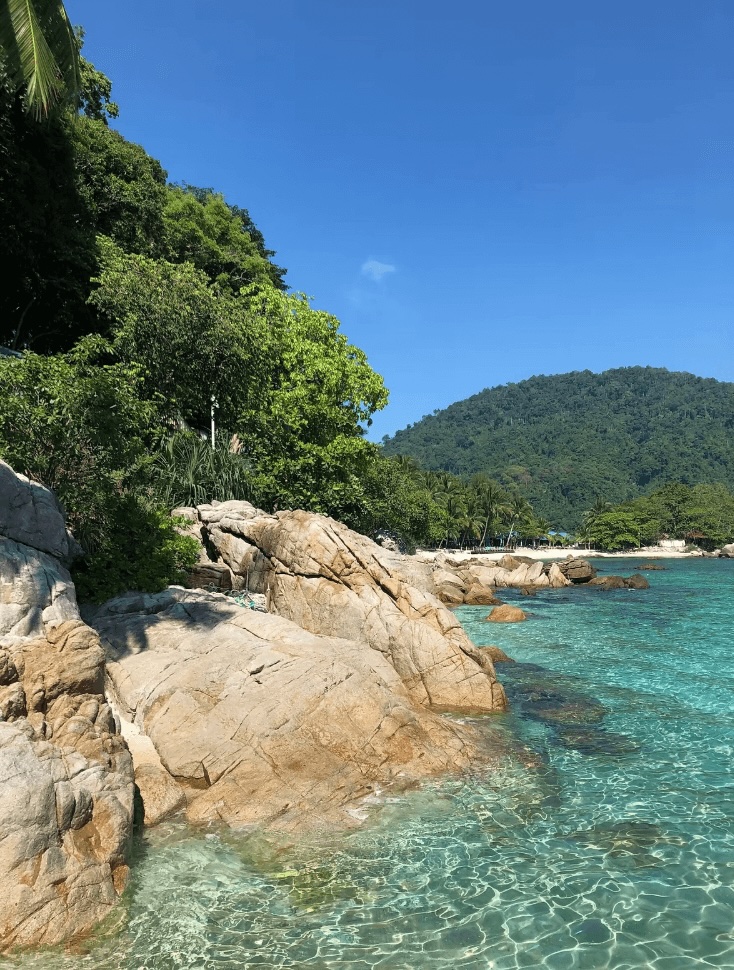
Redang Island
Also located within Terengganu Marine Park is Redang Island, a tropical haven that offers an abundance of dive sites.
It’s one of the largest islands off the coast of Peninsular Malaysia and is popular amongst travellers seeking a resort-like stay. Here, you’ll find both mid-range and luxury options.
Considering its rich biodiversity and diverse range of dive experiences, it’s no wonder Redang Island has become one of the most popular dive destinations on Malaysia’s east coast.
One of the island’s most renowned dive locations is “Pulau Lima”. It’s characterised by its coral-adorned boulders that attract barracudas, reef sharks and manta rays.
While the southern area of Redang is known for its strong currents, there are options to suit all skill levels. Around the island, you’ll find shallow beach dives, dramatic walls and impressive muck dive sites.
Eco-friendly places to stay on Redang Island
The Taaras Beach & Spa Resort
Surrounded by the crystal-clear waters of the South China Sea, this eco-friendly Redang Island resort provides a contemporary “barefoot luxury” experience.
In addition to hosting beach cleanups, The Taaras Beach & Spa Resort offers guests a “Sustainability Plan” to help reduce the environmental impact of their stay.
“Everything is amazing.” – Marina (read more reviews here)

Redang Campstay
This budget hotel on Redang Island boasts an absolute beachfront setting. It has everything you need for a memorable (yet affordable) stay.
Aside from its collection of tents, there’s an open-air bathroom and a communal kitchen where you can prepare simple meals. Spectacular ocean views are on offer from the wooden sun loungers.
“Perfect isolation to chase stress away.” – Mohd (read more reviews here)
Lang Tengah
Nestled between the more well-known resort islands of Redang and the Perhentians is Lang Tengah. It offers a peaceful diving experience for those seeking a quieter alternative.
Despite its small size, the island is home to around 12 dive sites. There are options for both beginners and experienced scuba pros.
The reefs surrounding Lang Tengah support a wealth of marine life, including tropical fish species, sea turtles and the occasional leopard shark. While diving here, you may also be lucky enough to encounter impressive schools of jacks and barracuda.
We found the conditions around Lang Tengah to be generally calm and easy, making it an ideal destination for those new to scuba diving. There’s a lack of strong currents and the excellent visibility provides a safe introduction to the underwater world.
On land, you’ll find just a handful of resorts, many of which are doing their best to reduce their environmental footprint.
Eco-friendly places to stay on Lang Tengah
Summer Bay Resort
Tucked away on the idyllic shores of Lang Tengah lies Summer Bay Resort, a newly opened accommodation that offers laid-back stays.
Aside from its modern rooms designed for solo travellers, couples and families, there are several eateries and an on-site dive centre.
This eco-friendly Lang Tengah resort is playing an important role in restoring the surrounding reefs with the conservation organisation, CoralKu.
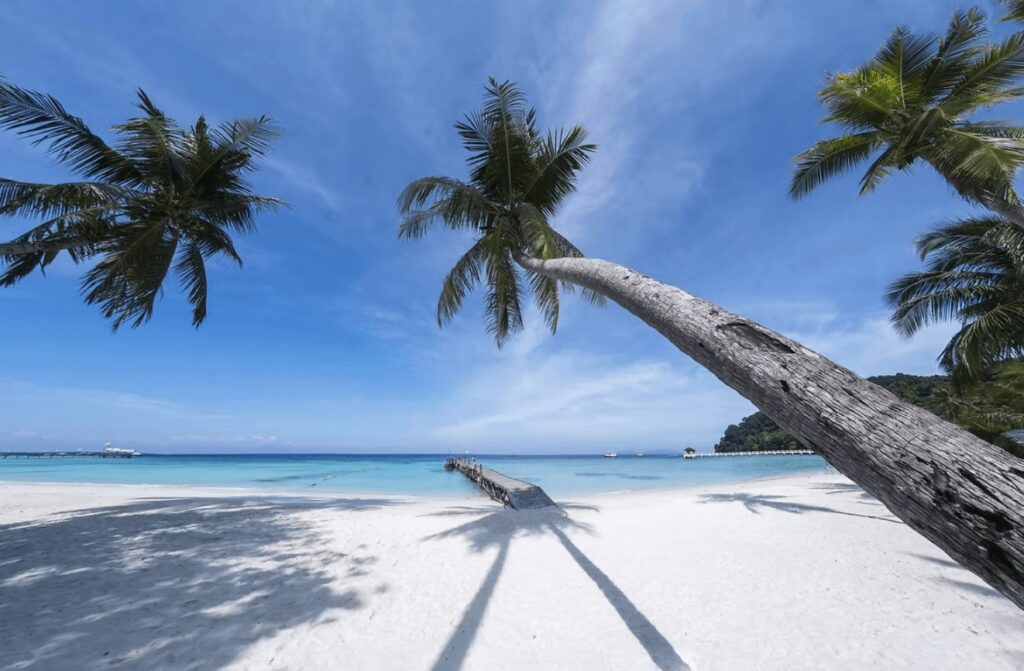
Tenggol Islands
This secluded cluster of rocky outcrops and tiny islets may lack the fame of Malaysia’s more well-known dive destinations. But what it lacks in recognition, it more than makes up for in the quality of its marine environments.
In our opinion, the main island of Tenggol boasts some of the most pristine coral formations anywhere in the region. Sprawling coral heads in vibrant hues carpet the seafloor, with the diversity and health of the reefs really impressive.
With a wide range of dive sites catering to every skill level, Tenggol offers something for everyone. There are shallow reefs ideal for beginners and muck diving sites, as well as deeper, more technical sites with dramatic swim-throughs and strong currents.
Dive resorts in the Tenggol Islands
The One Tenggol Resort
With a range of accommodation options, from cosy twin rooms to spacious triple suites, The One Tenggol Resort is the ultimate destination for nature lovers, adventure seekers and scuba divers alike.
The onsite dive centre offers fantastic opportunities to discover the marine life that calls these waters “home”. It also offers a handful of dive courses.
Tioman Island
As the third largest island in the country, Tioman may be relatively undeveloped compared to other Malaysian destinations. But its natural beauty is unparalleled.
The island’s dramatic granite cliffs and jungle-covered interior provide a spectacular backdrop for the coral reefs and shipwrecks that lie beneath the offshore waters.
Located within a protected marine park, Tioman is surrounded by a kaleidoscope of hard and soft corals. These provide habitat for a huge variety of reef fish and an abundance of sea turtles.
From tiny nudibranchs to schools of rainbow runners, jacks and barracuda, the biodiversity is simply astounding.
For the adventurous, Tioman also offers access to some excellent deep wreck dives. These include the impressive hulks of the British battleships HMS Prince of Wales and HMS Repulse.
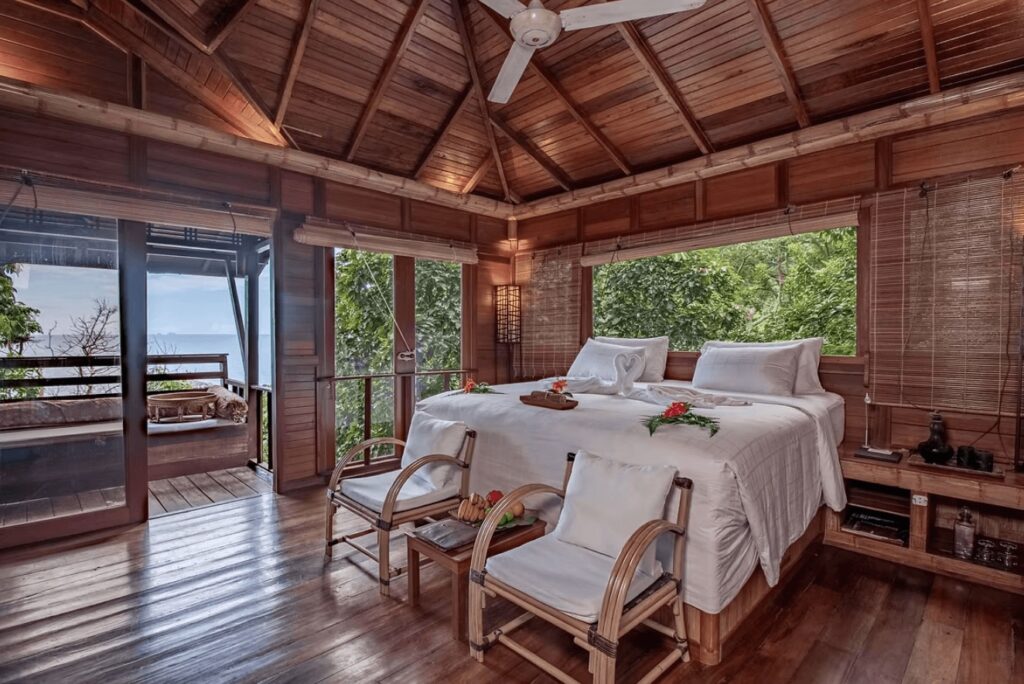
Eco-friendly resorts on Tioman Island
Japamala Resort
This eco-luxe resort on Tioman Island offers an adults-only getaway surrounded by tropical rainforest.
Select from one of its seaside or treetop chalets, which have been designed to preserve the surrounding environment. In addition to several restaurants serving Malaysian and Italian cuisine, there’s a sparkling swimming pool.
Dives can be arranged with one of Tioman’s dive shops.
“It is real castaway territory.” – Bernard (read more reviews here)
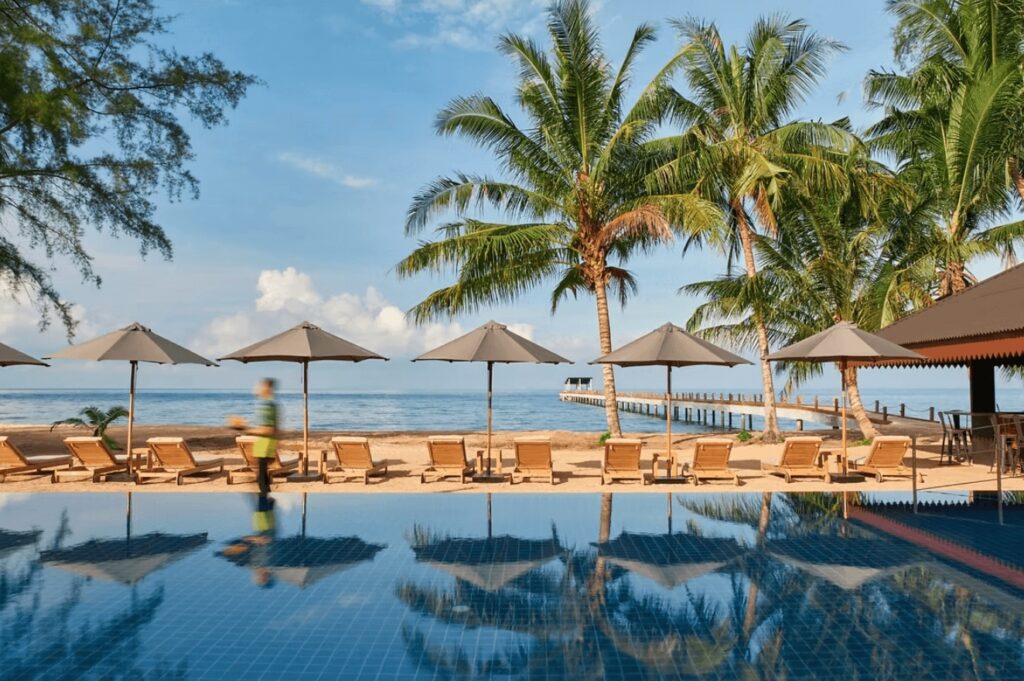
The Boathouse Pulau Tioman
Opening in July 2024, this eco-friendly Tioman resort enjoys a stunning beachfront setting on the west coast of Tioman Island. It features 31 beautifully designed bungalows inspired by Malaysian architecture and built using locally sourced materials.
An organic herb and vegetable garden is in the works to supply the onsite restaurant.
“The place is beautiful, clean and very new.” – Avinesh (read more reviews here)
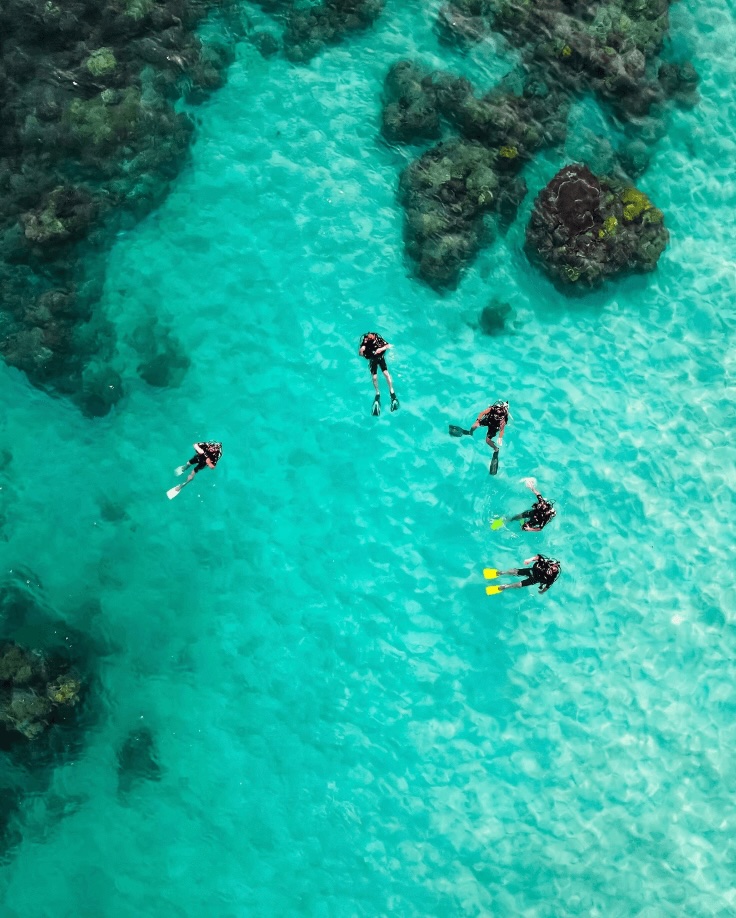
Langkawi
Situated on Malaysia’s picturesque west coast, Langkawi serves as a gateway to the renowned Palau Payar Marine Park. While the diving here may not measure up to the world-class underwater landscapes found in other parts of the country, the shallow, current-minimal reefs are ideal for beginners.
There are an abundance of Langkawi dive operators offering certification courses. Understandaly, it’s a popular destination for those trying scuba for the first time.
If you’re travelling with non-diving family members, Palau Payar also offers exceptional snorkelling opportunities. You can marvel at the park’s healthy coral gardens and their jewel-toned inhabitants without having to don a full dive kit.
Combined with Langkawi’s inspiring choice of eco-friendly resorts and you can see why it’s a deservedly popular choice.
Top tip:
Head to Langkawi when the monsoon season renders Malaysia’s eastern dive sites inaccessible.

Eco-friendly places to stay on Langkawi
The Datai Langkawi
As a pioneer of sustainable tourism in Langkawi, The Datai is far more than just another luxurious five-star resort. It sets a a benchmark for eco-tourism in Malaysia.
Seamlessly integrated into the rainforest that it calls “home”, it features an impressive Nature Centre. Here, a team of knowledgeable naturalists and marine biologists guide guests on immersive explorations.
This eco-friendly Langkawi resort runs an extensive list of environmental projects, from local coral regeneration and hornbill habitat restoration to recycling efforts, wastewater management and composting programs.
“Absolutely gorgeous property!” – Matteo (read more reviews here)

Ambong Rainforest Retreat
This family-owned boutique resort in Langkawi is ideal for nature enthusiasts, sprawling across 3.8 hectares of forested terrain.
Designed with reverence for the environment, Ambong Ambong offers guests two accommodation options. There’s a boutique hilltop resort featuring 11 elegant suites, studios and cottages, as well as nine ultra-private villas complete with infinity pools.
Beyond the luxurious accommodations, this eco-friendly Langkawi resort offers immersive activities that emphasise regenerative tourism. These include bamboo-planting initiatives and hands-on Malay cooking classes at its organic farm.
“It was an amazing experience. Just sitting on your balcony and observing monkeys, squirrels and all kinds of other animals.” – Grace (read more reviews here)

Sipadan and Mabul
Sipadan and Mabul are two small islands off the coast of Sabah in Malaysian Borneo. Together, they have become world-famous destinations for scuba divers.
Sipadan, in particular, is considered one of the best dive destinations on the planet. This is due to its healthy coral reefs, dramatic vertical walls and abundance of marine life.
Diving here means incredible encounters with turtles, pelagic fish, sharks, rays and schooling fish, all of which call Sipadan’s waters “home”. The biomass and biodiversity here is truly staggering to witness!
Just a short distance away, the island of Mabul is another legendary diving hotspot, but for very different reasons. Mabul is best known for its world-class muck and critter diving. Here, eagle-eyed underwater explorers are rewarded with sightings of rare, unusual and captivating marine creatures.
From coloruful nudibranchs to elusive shrimp and bizarre frogfish, the macro photographic opportunities in Mabul’s waters are limitless.
Eco-friendly places to stay in Sipadan and Mabul
Sipadan Kapalai Dive Resort
Comprising more than 50 overwater chalets linked by wooden boardwalks, this unique resort is like a private island built entirely on stilts.
Meals are served on an open-sided terrace, accompanied by stunning views across the Celebes Sea.
Sipadan Kapalai’s prime location makes it an ideal launching point for diving the surrounding waters. Daily trips are offered with the onsite dive centre.
“The best experience ever!” (read more reviews here)
Scuba Junkie Mabul
This multi-award-winning eco dive resort offers a range of accommodation options to suit every type of traveller. That’s true whether you’re a budget-conscious backpacker or seeking a little luxury.
Regardless of your budget, all guests can enjoy the resort’s outstanding dive facilities and direct access to some of Mabul’s best dive sites.
Scuba Junkie is at the forefront of marine conservation and sustainable tourism in Malaysia, operating with a deep respect for the country’s underwater ecosystems.
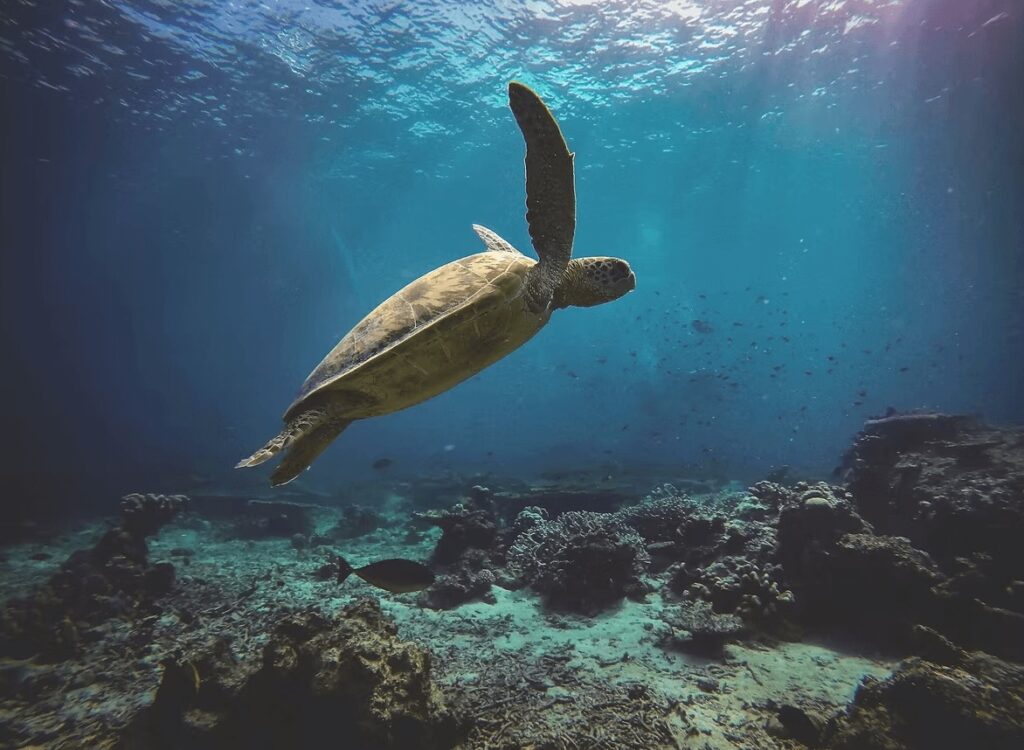
Best time to dive in Malaysia
The best time to dive in Malaysia across the majority of the country is from March through to October. This is when the weather conditions are typically calm.
During this period, the visibility is excellent and the marine life is particularly abundant.
Sipadan and other dive destinations around the state of Sabah in Borneo are also at their best for diving during these months.
In contrast, Langkawi on the west coast is best explored from November through to April, when the weather and ocean conditions are most favourable.
FAQs about diving in Malaysia
Is Malaysia good for scuba diving?
Malaysia’s east coasts (both on Peninsular Malaysia and the island of Borneo) boast some of the most exhilarating dive sites in the world.
Along the eastern shores of Peninsular Malaysia, calm waters surround the many picturesque islands. Here, the reefs are healthy and the conditions are ideal for easy dives.
However, those seeking more advanced thrills will find them in the deeper offshore areas. This is where strong currents create exciting drift dives along dramatic pinnacles and even the occasional sunken shipwreck.
Further east, the island of Sabah in Malaysian Borneo is widely recognised as one of the planet’s top dive destinations. Jacques Cousteau himself endorsed Sipadan Island as a “must” for underwater enthusiasts.
From the smallest macro creatures to majestic pelagic species, Sipadan offers an astounding diversity of marine life. Here, you’ll discover everything from healthy coral gardens to underwater caves where schools of sleepy sharks congregate and sea turtles come to spend their final days.
For those seeking an even more off-the-beaten-path diving experience, the remote islands of Layang Layang and Lankayan provide frontier-style diving. Here, there’s the chance to spot elusive hammerhead sharks and even the seasonal appearance of whale sharks.
Terengganu Marine Park is another fantastic spot to explore, either from the Perhentians or Redang Island.
When to go diving in Malaysia?
The diving season along the east coast of Peninsular Malaysia is from March through to October. During this period, the weather conditions are calm and the underwater visibility is at its peak.
Generally speaking, April to June and September/October are the best months for dive exploration.
In contrast, the west coast (including the island of Langkawi) presents its best diving conditions from March to August. If you head there early in the season, you’ll have the best chance of spotting scalloped hammerhead sharks.
Sipadan Island and its surrounding sites offer year-round exploration opportunities. That being said, the optimal conditions are experienced from April to December. Many consider July and August to be the best months for visibility.
Is Penang good for diving?
While Penang itself doesn’t offer the most pristine diving conditions, with its often murky waters, the surrounding region provides ample opportunities for underwater exploration.
Just a couple hours north of the island lies Pulau Payar, a protected marine park that serves as the premier diving destination in the area. It’s particularly popular with experienced divers due to its deep sites and large pelagic species.
Closer to Penang (just a half-hour boat ride away) lies the wreck of the SS Amherst. This World War II vessel is now encrusted in coral and populated by a diverse array of marine creatures. It offers a fascinating history lesson for advanced scuba enthusiasts.
Where is the best place to dive in Malaysia?
Sipadan Island (located off the northeast coast of Sabah on the island of Borneo) is widely regarded as the crown jewel of Malaysia’s dive destinations. While there are several exceptional dive sites scattered around the island’s perimeter, one of the most awe-inspiring is known as the Drop Off.
Coming in a close second is nearby Mabul Island, known for its exceptional muck and critter diving. As such, it has become a sought-after destination for discovering the more obscure wonders of the underwater world. Mabul Island is often visited in tandem with Kapalai and Sipadan.
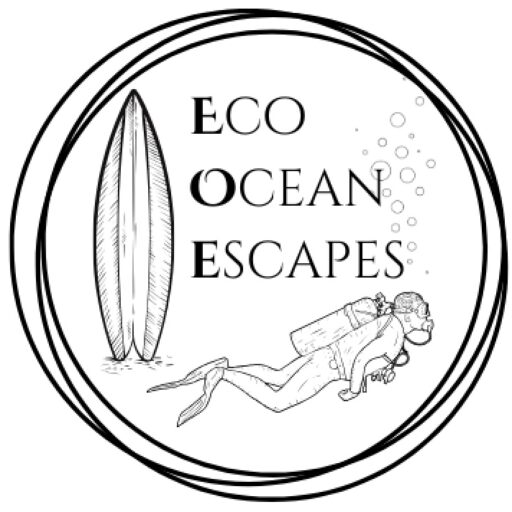
PLAN YOUR TRIP WITH OUR FAVOURITE RESOURCES:
Find hotels and resorts via Booking or Agoda
Book tours and experiences via Viator or GetYourGuide
Find a rental car via Discover Cars
Book flights via Kiwi or Booking
Search for buses and trains via 12Go or Omio
Get travel insurance via SafetyWing
Buy a digital eSIM with Airalo
By purchasing through our links, you’ll be supporting our website at no additional cost to you
About the authors
We are a team of passionate divers and surfers with decades of combined experience in the water and travelling to all corners of the globe. After years of chasing waves and descending into the deep blue, we’ve created this resource to highlight sustainably run surf camps, eco-friendly dive resorts and conservation-focused ocean trips to help inspire your next adventure.
Eco Ocean Escapes was born out of a love of the ocean, an obsession with travel and a concern about the impacts of our adventures on the environments we explore. Despite the benefits that surf and dive tourism can bring to local communities, we recognised that ocean-based adventures are not always managed in a sustainable manner.
Through our articles, we hope to inspire those seeking a responsible surf or dive trip that is all about supporting local communities, preserving our coastal environments and the incredible marine species that inhabit our oceans.
-
Sustainable Surf Tourism and Respecting Local Communities
Surf tourism has exploded over the last two decades. With travel becoming more accessible and social media exposing hidden spots, once-remote breaks in Indonesia, Central America, Morocco and the Pacific Islands are now iconic stops on global surf circuits. While surf travel brings income, jobs and global attention to coastal towns, it can also disrupt…
-
Inspiring Citizen Science Projects for Surfers + How to Get Involved
As surfers, we are intimately connected to the ocean – its rhythms, its wildlife and its health. Because of this relationship, many of us are looking for meaningful ways to protect the marine environments we love. One of the simplest and most impactful ways we can do this is by joining citizen science projects. These…
-
Understanding Marine Protected Areas (MPAs): Why divers should care
If you’ve spent time underwater (as a diver or snorkeller), you’ve probably noticed something: not all sites are beacons of health. Some reefs appear vibrant and full of life, while others show signs of stress – broken coral, few fish or algae-covered rocks. One of the biggest factors shaping the health of our oceans is…
-
Costa Rica: Best Marine Parks for Scuba Divers + Eco Dive Resorts
Costa Rica is a paradise for eco-conscious travellers and underwater explorers are no exception. With its healthy coral reefs, pelagic-rich waters and some of the most progressive environmental policies in the world, the country is a dream destination for those who want to dive responsibly. We’ve been lucky enough to visit Costa Rica several times…
-
Eco-Diving: Best Destinations for Sustainable Scuba Travel
As humans inspired by the underwater world, there is plenty of incentive to protect our coral reefs. Here at EcoOceanEscapes, we want to do our bit to save endangered marine species and keep our oceans free of trash. One impactful action we can all take is to choose sustainable diving destinations. These are nations (or…
-
Eco-Friendly Diving: How to Be a Sustainable Scuba Advocate
Understand the environmental impacts of diving and sustainable scuba practices in this comprehensive guide to eco-friendly diving. Any diver will tell you that being underwater is an incredible experience. It’s a world that not everyone has the opportunity to explore and the encounters we have with marine creatures can be life-changing. Watching manta rays soar…

We are a team of passionate divers and surfers with decades of combined experience in the water and travelling to all corners of the globe.
After years of chasing waves and descending into the deep blue, we’ve created this resource to highlight sustainable surf camps, eco-dive resorts and conservation-focused ocean trips to help inspire your next adventure.
Eco Ocean Escapes was born out of a love of the ocean, an obsession with travel and a concern about the impacts of our adventures on the environments we explore.
